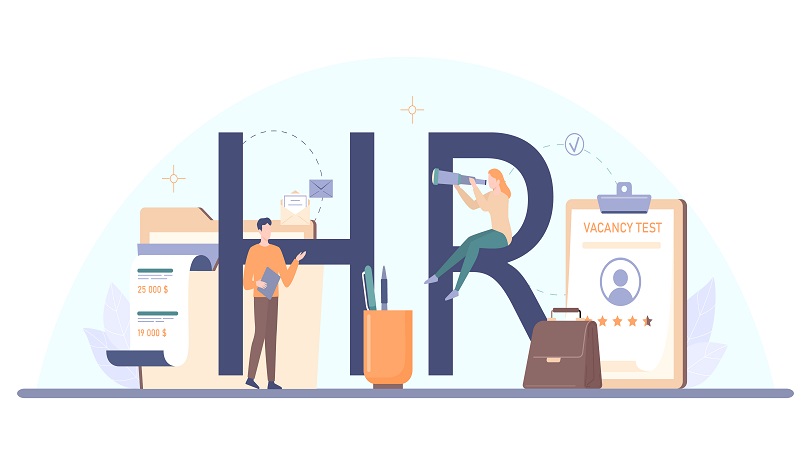HRMS vs. Traditional HR: Which is Right for You?

HRMS vs. Traditional HR: Which is Right for You?
Human resources is the backbone of any organization. From recruiting and onboarding to payroll processing and employee engagement, HR plays a crucial role in building and retaining a strong workforce.
For decades, these functions were handled manually—through paper forms, spreadsheets, and face-to-face interactions. While this traditional HR model offers a personal touch, it often struggles to keep up with the demands of modern business environments.
Enter HRMS software—a technology-driven solution that automates, streamlines, and integrates core HR functions into a single platform. But is it always the better choice? In this article, we’ll compare HRMS software with traditional HR to help you decide which approach is right for your organization.
What is Traditional HR?
Traditional HR refers to the manual management of human resources through physical paperwork, basic tools like spreadsheets, and in-person processes.
Typical characteristics include:
- Paper-based record keeping for employee files and contracts.
- Manual payroll calculations done monthly by HR staff.
- Attendance tracking via registers, sign-in sheets, or manual punch cards.
- Face-to-face communication for queries, grievances, and policy explanations.
- Recruitment through offline channels such as newspaper ads or job fairs.
Advantages of Traditional HR:
- Human connection: More personal interactions foster better relationships with employees.
- Flexibility: No reliance on software; processes can be adapted quickly.
- Lower initial costs: No upfront investment in technology or software licenses.
Limitations:
- High risk of human error in payroll and compliance.
- Time-consuming processes that reduce productivity.
- Difficult to scale with a growing workforce.
- Limited ability to analyze HR data for strategic decisions.
What is HRMS Software?
HRMS software (Human Resource Management System software) is a digital solution that automates and integrates HR processes into one centralized platform.
Key features include:
- Automated payroll & tax calculations with compliance tracking.
- Biometric or digital attendance tracking integrated with leave management.
- AI-driven recruitment tools for resume screening and applicant tracking.
- Performance management systems with KPI tracking and feedback cycles.
- Employee self-service portals for leave requests, payslip downloads, and personal data updates.
Benefits of HRMS Software:
- Efficiency: Automates repetitive HR tasks, saving hours of manual work.
- Accuracy: Reduces payroll and compliance errors significantly.
- Data insights: Real-time analytics help HR managers make informed decisions.
- Scalability: Can handle growth from 50 to 5,000 employees without breaking processes.
- Employee empowerment: Self-service tools improve transparency and accessibility
Feature-by-Feature Comparison
| Feature / Aspect | Traditional HR | HRMS Software |
|---|---|---|
| Record Keeping | Paper files, spreadsheets | Centralized, cloud-based employee database |
| Payroll Processing | Manual calculation | Automated with tax & compliance updates |
| Attendance Tracking | Manual registers | Digital tracking with integration |
| Recruitment | Offline ads, manual screening | AI-based applicant tracking systems |
| Performance Reviews | Annual, subjective | Continuous, metrics-based reviews |
| Compliance Management | Manual monitoring | Automated alerts & updates |
| Employee Self-Service | None | Available via portal or mobile app |
Why Companies Move from Traditional HR to HRMS Software
Time Savings
Tasks like payroll processing or leave approvals that took hours in a traditional system can be done in minutes with HRMS software.
Reduced Errors
Automation ensures calculations and records are accurate, reducing costly mistakes in payroll or compliance.
Better Compliance
Built-in compliance features keep track of changing labor laws and automatically update policies.
Data-Driven Decision Making
With dashboards and analytics, HR teams can track attrition, monitor performance, and plan workforce needs effectively.
Industry Examples
- Manufacturing: Large plants use HRMS software for shift scheduling, biometric attendance, and overtime tracking.
- IT & Tech: Integrates with project management tools for tracking billable hours and remote work attendance.
- Retail: Manages high employee turnover, multiple locations, and seasonal hiring seamlessly.
ROI and Cost-Benefit Analysis
While HRMS software requires an initial investment, the long-term savings are significant. Savings come from:
- Reduced administrative headcount for repetitive tasks.
- Fewer compliance fines due to automated accuracy.
- Higher employee satisfaction and retention.
A mid-sized company can save up to 25–40% of HR operational costs after implementing a robust HRMS solution.
Implementation Considerations
- Training: Both HR staff and employees need onboarding on the new system.
- Data Migration: Employee records must be securely transferred to the platform.
- Integration: HRMS software should connect with existing tools like ERP or accounting systems.
Future Trends in HRMS
- AI & Predictive Analytics: Forecast attrition and talent needs before they occur.
- Mobile-First Interfaces: Enable HR processes to be managed from smartphones.
- Integration with Collaboration Tools: Seamless HR processes within platforms like Microsoft Teams or Slack.
Conclusion
Traditional HR still has value for very small businesses or organizations prioritizing in-person relationships. However, for companies aiming to scale efficiently, HRMS software offers clear advantages in speed, accuracy, compliance, and employee engagement.
By adopting a reliable solution like the Kenbox HRMS Suite, businesses can future-proof their HR operations and focus on strategic growth rather than routine administration.